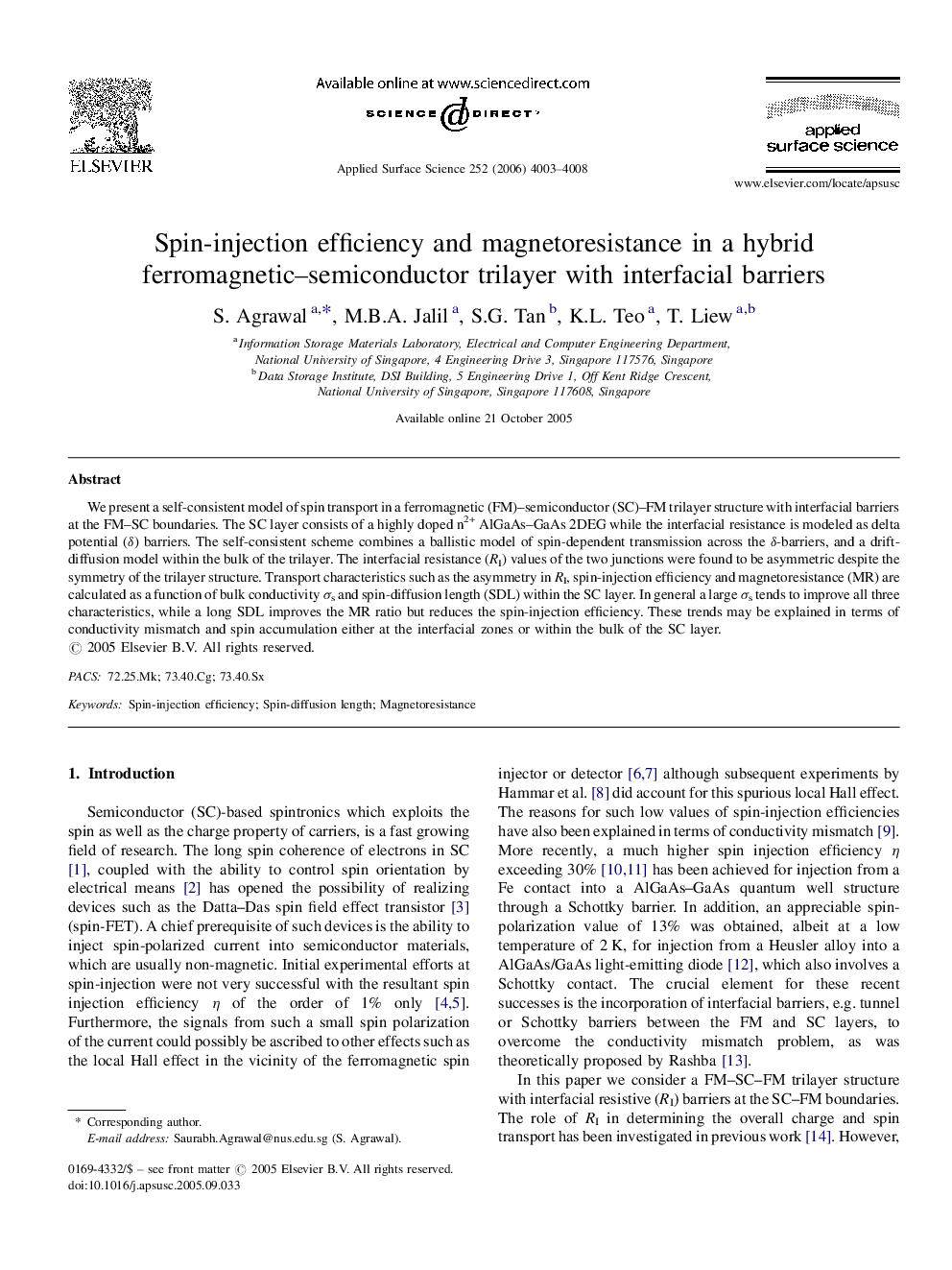| Article ID | Journal | Published Year | Pages | File Type |
|---|---|---|---|---|
| 5366907 | Applied Surface Science | 2006 | 6 Pages |
We present a self-consistent model of spin transport in a ferromagnetic (FM)-semiconductor (SC)-FM trilayer structure with interfacial barriers at the FM-SC boundaries. The SC layer consists of a highly doped n2+ AlGaAs-GaAs 2DEG while the interfacial resistance is modeled as delta potential (δ) barriers. The self-consistent scheme combines a ballistic model of spin-dependent transmission across the δ-barriers, and a drift-diffusion model within the bulk of the trilayer. The interfacial resistance (RI) values of the two junctions were found to be asymmetric despite the symmetry of the trilayer structure. Transport characteristics such as the asymmetry in RI, spin-injection efficiency and magnetoresistance (MR) are calculated as a function of bulk conductivity Ïs and spin-diffusion length (SDL) within the SC layer. In general a large Ïs tends to improve all three characteristics, while a long SDL improves the MR ratio but reduces the spin-injection efficiency. These trends may be explained in terms of conductivity mismatch and spin accumulation either at the interfacial zones or within the bulk of the SC layer.
